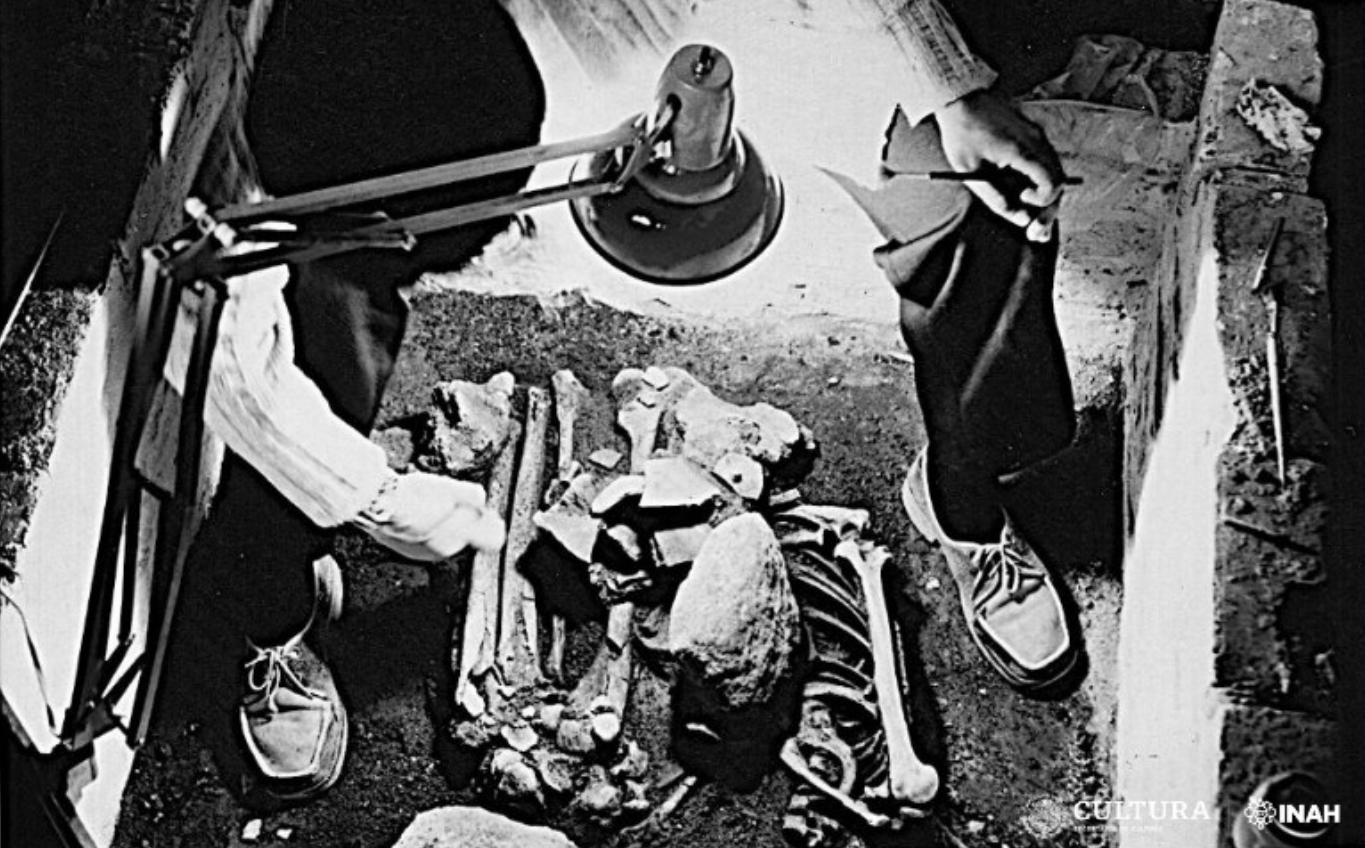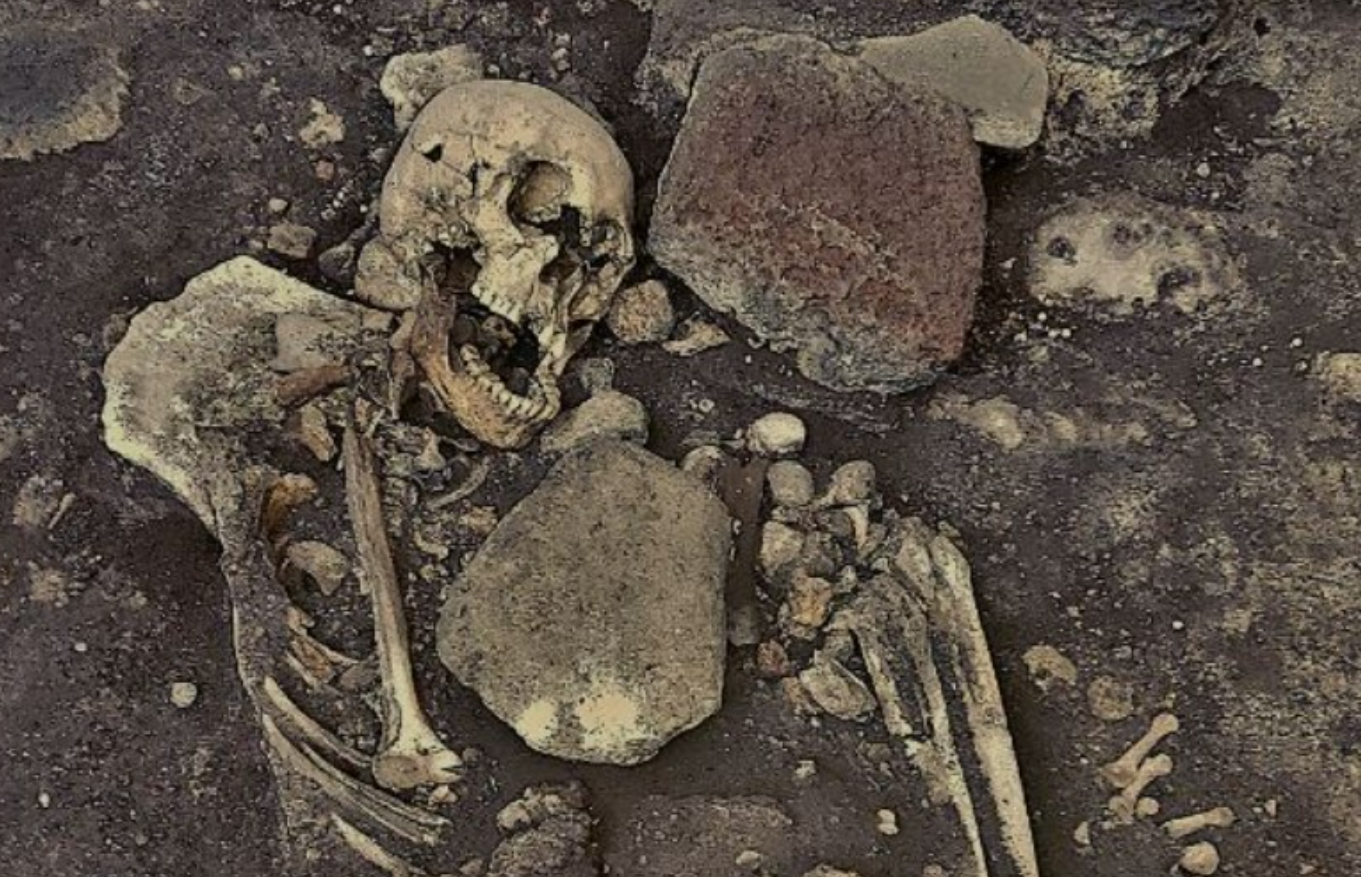New research has revealed a grave historical error at Palacio de Cortés in Mexico. It was long assumed that a skeleton on display at the palace was that of a Spanish monk – but a new analysis has shown that it actually likely belonged to an Aztec woman.
Palacio de Cortés in the city of Cuernavaca was damaged by the deadly Puebla earthquake in September 2017, sparking a renovation project to restore the building to its former glory. During the restoration work, anthropologists from Mexico’s National Institute of Anthropology and History (INAH) took a fresh look at the supposed monk buried in the palace.
While most believed the body belonged to a Spanish “man of the cloth” named Juan Leyva, the identity of this person was never certain.

Excavations of the Palacio de Cortés skeleton in the early 1970s.
Image credit: Juan Dubernard Chauveau/INAH
The label that has been accompanying the remains for almost 50 years reads as so: “Burial found in situ of a man with deformed vertebrae. Traditionally it is stated that it may be the monk Juan Leyva, who served the Marchioness Doña Juana de Zúñiga de Arellano, wife of Hernán Cortés and resident of this palace, however, due to the type of posture it may be an indigenous burial.”
To settle the mystery once and for all, INAH researchers launched a detailed archeological analysis of the remains and its setting.

A more recent image of the skeleton.
Image credit: INAH
Wear-and-tear on their teeth indicates the person was 30 and 40 years old when they died. Despite their “deformed vertebrae”, they found no evidence of disease in the skeleton, leaving it uncertain how the person died.
Based on the size of their humerus (an upper arm bone), the researchers suggest they were around 147 centimeters (under 4 foot 10 inches) tall. The wider shape of the pelvis also clearly shows that the skeleton was feminine.
Crucially, the study suggests the body dates to an era spanning 1450 to 1500 CE. Since European colonizers did not arrive in modern-day Mexico until 1511 CE, we can safely assume this is not the body of a Spanish man.
Instead, the researchers argue that the people belonged to a pre-Hispanic group, most likely the Tlahuica people of Central Mexico. The Palace of Cortés was only constructed by the Spanish in the 1520s, so it appears the structure was built around this pre-existing grave from a previous era.
“It is more related to a pre-Hispanic burial, which could belong to the contact period or earlier,” Jorge Angulo, an archaeologist with the INAH, said in a statement.
He added that the previous theory didn’t make sense because it was very strange “that a clergyman was buried outside his community, even more so that his burial system was not associated with the Catholic canons of the time.”
In light of this work, the archaeological display has recently been reopened with a new certificate, which states that the burial belonged to a “Tlahuica Woman.”
Source Link: Skeleton Of "Spanish Monk" Turns Out To Be An Aztec Woman